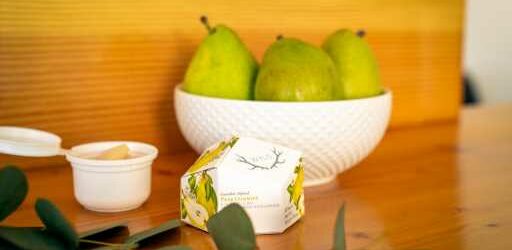The common colloquialism for the well-known stoner holiday of April 20 is to “light one up.” But if you’re not interested in smoking, the second most popular way to celebrate is eating some edibles infused with tetrahydrocannabinol, or THC.
I’m not speaking anecdotally. According to Louisville-based analytics firm BDSA, inhalable forms of cannabis such as flower and vaporizers accounted for 81% of dispensary sales (by dollar) in Colorado between February 2021 and February 2022, followed by edibles at 17% or about $380 million worth of purchases.
While smokeable forms of cannabis are expected to remain the top sales driver, Jessica Lukas, BDSA’s chief commercial officer, said the firm is forecasting the U.S. edibles sector to grow to $5 billion by 2026, as new states legalize marijuana.
In Colorado, edibles sales are expected to remain steady over the same time period, growing by 1% to 2%, but it’s the diversification of products and reasons to use them that’s evolving the category. For example, cannabinoids beyond THC and cannabidiol (CBD) are popping up more frequently on edibles labels.
“THC is always going to be the primary, always … . But continuing to think about the different cannabinoids as recipes to create the functional experiences that consumers are looking for, it’s going to continue to get more and more targeted,” Lukas said, referring to new products designed to aid sleep and fitness.
In short, buying edibles no longer means a one-size-fits-all experience. Here are the up-and-coming trends and products you can use to custom your high.
MINOR CANNABINOIDS
The cannabis plant boasts dozens of cannabinoids that scientists are only beginning to research and understand. CBD has become ubiquitous in marijuana and wellness products to the point that it’s practically a household name.
Edibles manufacturers are now introducing “minor” or “secondary” cannabinoids like cannabigerol (CBG) and cannabinol (CBN) to differentiate their products.
Oregon brand Wyld, which expanded to Colorado in 2020, began incorporating CBN into edibles for people who take edibles in the evening to help them sleep. The company sells hemp-derived gummies with CBD, CBG and CBN that do not offer a high, as well as elderberry gummies that each have 10 milligrams of THC and 5 milligrams CBN. The latter is among the company’s most popular in Colorado, said Ben Gaines, Wyld’s director of marketing.
“CBN is commonly associated with being sedate or getting a great night’s rest,” said Gaines. “We don’t speak for consumers, we make no medical claims … but it’s very, very clear (anecdotally) that consumers are finding that THC plus CBN is helping them with getting a good night’s rest.”
Wyld’s pear-flavored, CBG-infused gummies are also gaining traction here, Gaines said, offering consumers “more of a booster” with effects similar to CBD.
CBN and CBG are the buzziest minor cannabinoids right now, Gaines said, but the company plans to keep an eye on others and their use as cases become widely understood.
“Realistically, sometimes a cannabinoid is out there and able to be isolated, but it’s not commercially viable at our scale,” he said. “Wyld will continue to monitor and develop new cannabis experiences as they become available.”
RAPID ONSET
Eating edibles provides an inherently different experience than smoking cannabis because they are absorbed through digestion. Typically, that means it takes longer for the effects to kick in.
The folks at Colorado-based Wana Brands, however, are using new technology so their edibles have a rapid onset. According to Joe Hodas, chief marketing officer, the manufacturer’s line of Quick gummies is infused in a way that tricks the body into absorbing the THC into the bloodstream like it would water, so consumers feel the effects in about 15 minutes.
“We call these happy hour gummies,” Hodas said. “You know what’s going to happen: It’s quick and then there’s off-ramp.” The gummy typically runs its course in about three hours, he added.
The company recently expanded the line to include Quick Spectrum Live Rosin gummies, which, as the name suggests, use live rosin instead of distillate for infusion. Distillate is a THC isolation, and when it’s used in Wana edibles, they are also re-infused with terpenes and other cannabinoids. Live rosin, however, is procured by freezing the marijuana plant and pressing oil from the plant so it maintains all its original compounds.
That means the gummies vary in flavor and potency like the original cannabis strains they’re made from, Hodas said, adding the edibles offer a more “full plant experience” akin to smoking. (Wana also sells sleep- and fitness-specific gummies.) The company’s rapid-onset options are expected to complement — not replace — traditional gummies.
“Some people like the full-body effect of an edible, they like it to last longer. Particularly if you’re taking it for pain, you want that to go throughout the day,” Hodas said. “I don’t think (rapid onset) is necessarily going to get rid of the existing standard gummy market, but I do think it’s an enhancement and it gives people choice.”
BEVERAGES
Gummies lead the edibles category, according to BDSA sales data, but one segment that manufacturers continue to be bullish on is infused beverages.
BDSA reports beverages account for 1% to 2% of sales throughout the U.S., hindered by availability and price compared to other edibles. Still, people like Dale Katechis, founder of Oskar Blues Brewery and namesake of Dale’s Pale Ale, see the category’s potential.
“I see potential and certainly some direct parallels with this new space in the THC beverage market with what I experienced building a category in the craft beer space by putting it in a can,” said Katechis, who recently joined the leadership team at Weller, a Boulder company making CBD sparkling water.
Weller will debut a line infused with THC in late April. The sparkling water will come in three flavors — tropical peach (sativa), blackberry-hibiscus (indica), and starfruit-lime (hybrid) — and each 12-ounce can boasts 5 milligrams of THC and 5 milligrams of CBD.
THC beverages, like Ceria Brewing Co.’s infused beers, are only available at dispensaries, though that’s poised to change as cannabis “bars” open throughout the state and offer a familiar setting in which to indulge. Having hospitality establishments, as they are formally called, will be a “game-changer” for beverages, Katechis said, though the products are expected to remain more expensive compared to other edibles when considering how many milligrams of THC you get per dollar spent.
Like Wana, Weller’s beverages will have rapid-onset effects to mimic the experience of drinking an alcoholic beverage. Katechis believes education will be key to the category’s success and that ultimately the beverages will be the largest growth-driver for cannabis.
“That’s a bold statement for sure. More than anything, I just had the experience of living in the craft beer world and the beverage world before a lot of things changed the landscape. I would specifically say canned beer,” he said. “We not only helped educate the retailer and the wholesaler, but our mantra was we went out and educated the consumer, and that helped broaden the category as a whole. And I feel like the THC consumer right now is in the same boat.”
Subscribe to our weekly newsletter, In The Know, to get entertainment news sent straight to your inbox.
Source: Read Full Article



